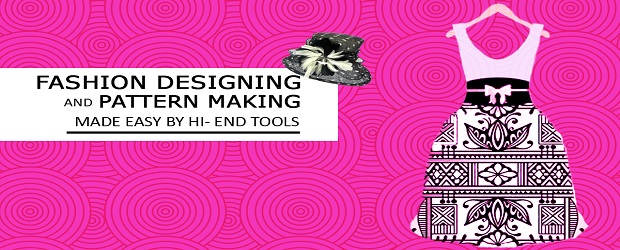Fashion Industry is about 100 crore industry in India proving itself to be the sunrise industry for the country. Fashion Design and Pattern making is one of the rapidly growing and highly creative trend in the market. The fashion designers are expected to be highly knowledge intensive- professional designers having a deep expertise in a wide range and combination of materials with working in different colors, patterns and styles.
Challenges of Conventional Fashion Design
Conventional ways dealing with Fashion Design suffers with challenges such as manual errors and deformities, color and patterns dissimilarities and defects in the pattern and fabric of the garment. Catering to all these challenges, technology has emerged with highly specialized tools to help designers create fabrics with flexibility, ease and in a hassle free manner.
How 3D Visualization Revolutionizes Fashion Prototyping
Modern fashion design tools enable designers to visualize their products in 3D, allowing them to experiment with textures, shapes, and patterns before creating physical samples. This not only speeds up the prototyping process but also reduces errors and improves overall design accuracy.
The highly advanced tools enables candidates to learn 3D product visualizations, texture mapping, color reduction and cleaning, designing and repeating patterns, colorways and color communication. The multipurpose design software helps the designers to create fashion products which are not only defect- free but also aesthetically pleasing.
The expert software tools help designers to generate extensive garment designs adding professionalism conveyed by the designers for outstanding results.
Bridging the Gap Between Traditional Techniques and Digital Tools
While technology brings numerous benefits, it also enables a seamless blend of traditional and modern techniques. Designers can combine hand-drawn designs with digital tools to create unique and customizable fashion pieces, preserving the artistry while embracing innovation.
Leading courses offering extraordinary Designing Skills:
The highly advanced courses provides advanced skills in computer drawing, design and presentation techniques and how to apply them to the creative world of fashion and pattern making process. Specialized Curriculum for supreme fashion design courses is making candidates achievers in their field of interest boosting their career.
Fashion Designing courses are providing a comprehensive overview of the textile science before getting into the details of fabric design while laying emphasis on the methodologies of complex patterns for fashion designers. The course lays special attention to the creative aspects such as styling and embellishment.
DreamZone being one of the leaders in Creative Skill Development offers powerful course content making aspirants highly competent in the emerging market of Fashion Designing and Pattern Making. The course covers fields such as:
* Texture Science,
* Styling,
* Embellishment,
* Fabric Design,
* Print and Patterns
Conclusion:
Fashion Designing and Pattern Making have transformed significantly with the advent of advanced tools and technology. These innovations not only streamline the design process but also help eliminate common errors while enhancing creativity. Fashion designing Courses offered by institutions like DreamZone equip aspiring designers with the skills and knowledge needed to excel in this evolving field. By mastering these cutting-edge techniques, students can step confidently into the competitive fashion industry and make their mark as professional designers.
FAQs
What skills do fashion design courses teach?
Fashion design courses cover a range of skills, including computer-aided design, fabric design, complex pattern methodologies, and presentation techniques. Courses also focus on creative aspects like styling, embellishment, and texture science
Can digital tools replace traditional pattern making techniques?
While digital tools have enhanced the efficiency and accuracy of pattern making, they complement rather than replace traditional techniques. Many designers blend traditional hand-drawn patterns with digital innovations to create unique designs.
What kind of job roles can I pursue after completing a fashion design and pattern-making course?
Graduates of fashion design and pattern-making courses can pursue various roles, including fashion designer, pattern maker, textile designer, fashion illustrator, fashion consultant, and CAD designer. With the right skills, students can also explore careers in styling, merchandising, and fashion entrepreneurship.
What is the role of artificial intelligence (AI) in fashion design and pattern making?
AI is becoming an integral part of fashion design by predicting trends, optimizing pattern layouts, and automating repetitive tasks like color matching and fabric cutting. AI also helps designers make data-driven decisions to meet consumer demands more effectively.
How does DreamZone’s fashion design course stand out?
DreamZone offers specialized courses that equip students with both technical and creative skills. The curriculum focuses on textile science, styling, and pattern-making, ensuring students are prepared to excel in the competitive fashion industry.
How do these courses help in building a fashion design career?
Fashion design courses provide the technical skills and creative knowledge needed to succeed in the industry. By mastering advanced tools and techniques, students can create professional, market-ready designs, boosting their career prospects.

